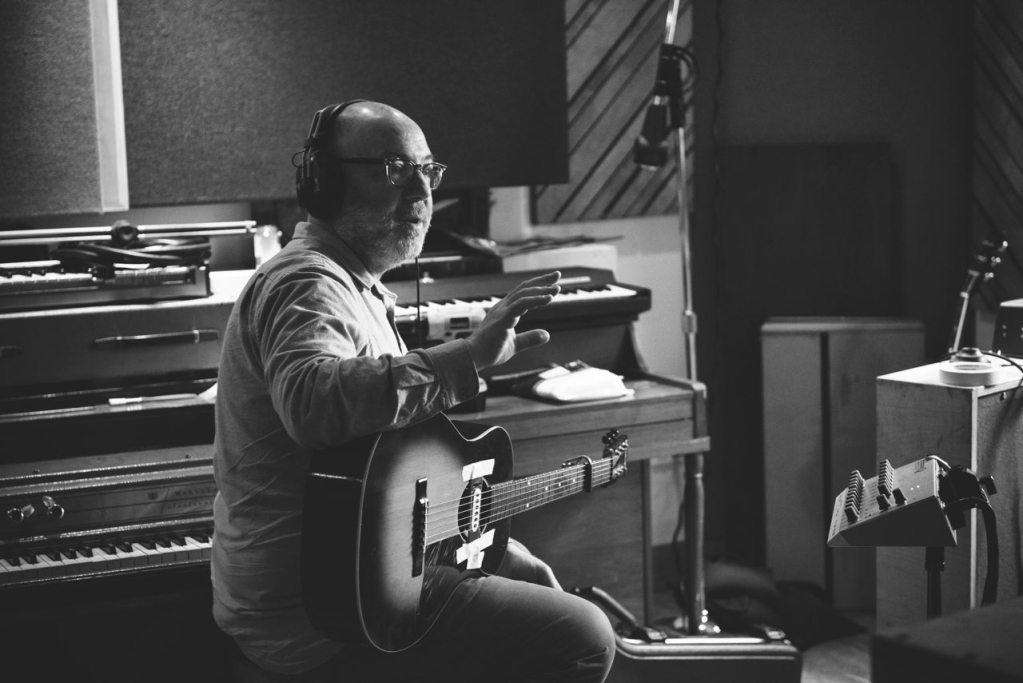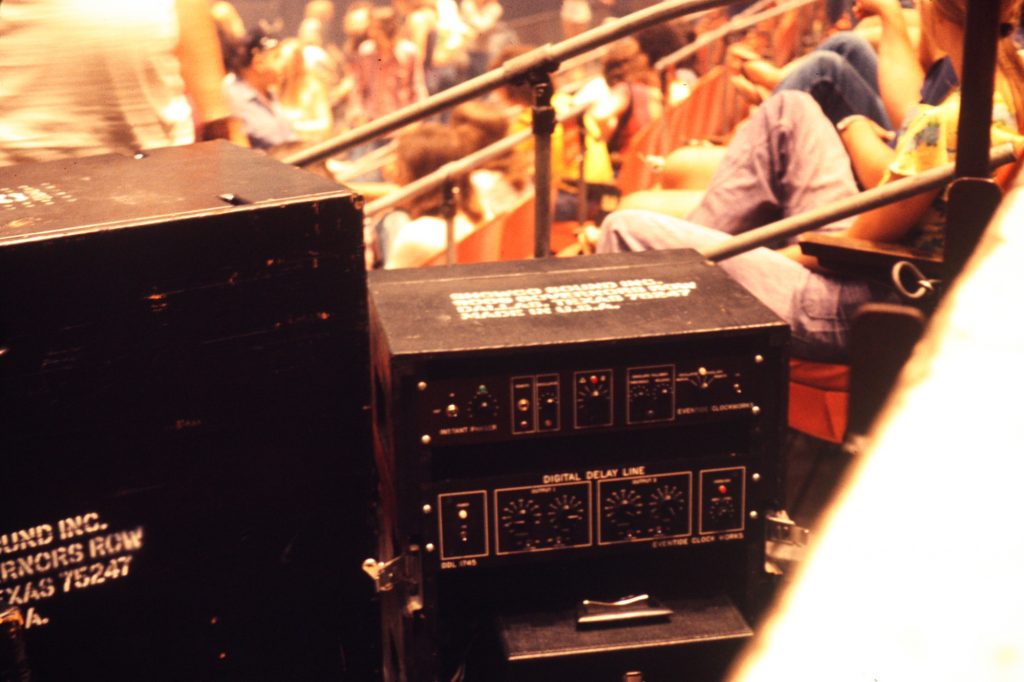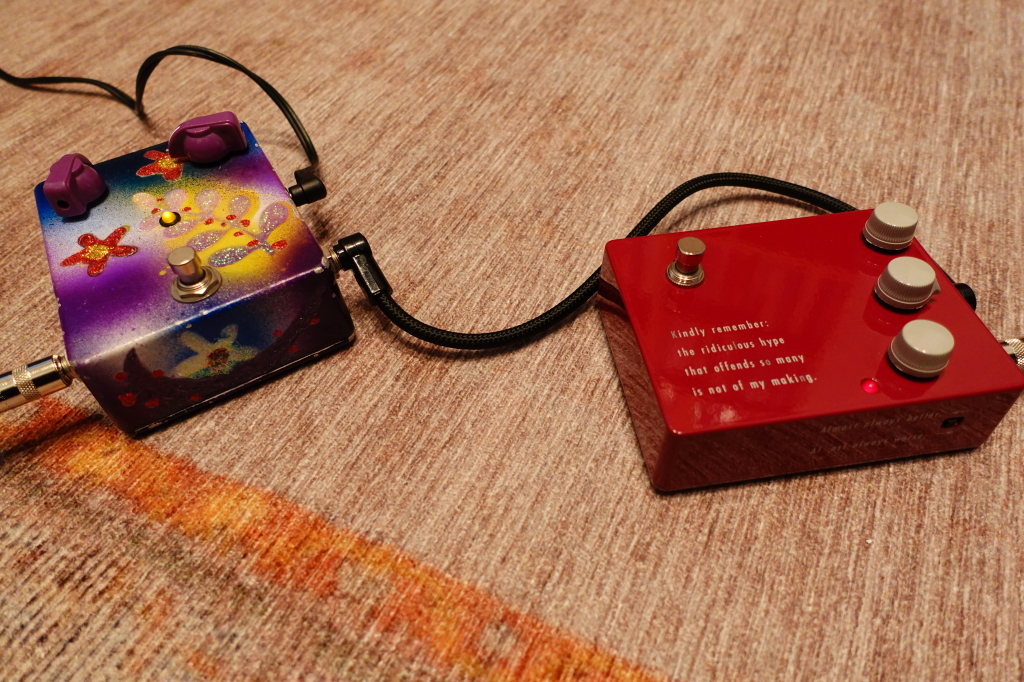By Adam Levy

A friend recently asked me the following question, and I think it’s an interesting one to explore here.
As a guitarist, is your approach on a full-budget recording session different from your approach on a smaller session?
Before comparing my approach to the two scenarios, I’ll clarify what those terms most often mean for me. Full-budget sessions usually happen at fully-equipped commercial recording studios. For smaller sessions, I generally record myself at home—overdubbing onto a client’s tracks.
Now let me tell you about two sessions I worked on, six years apart—both for producer/songwriter Joe Henry.
The first of these happened in 2016, when Joe was producing a cover of the Carpenters’ “Yesterday Once More” for the HBO show Vinyl. Joe called me two weeks before the session was scheduled and explained that we were aiming for a version that was true to the original, so I gave the song a good listen. I had heard it on the radio when I was a kid, but never noticed the electric guitar on it—tasty fills with some cool double-stops, and a gently swirling tone. If I was going to replicate that sound, I had some homework to do.
With a little help from Google, I discovered that longtime Carpenters guitarist Tony Peluso had played on “Yesterday Once More.” I also learned that the song was released in ’73, which made the swirly tone a bit of a mystery. Peluso may have been playing through a pedal like the MXR Phase 90 or Electro-Harmonix Small Stone, but those pedals were first released around the time of the song’s recording and wouldn’t have been in common usage yet.
Perhaps phasing wasn’t achieved by a pedal. Eventide released its rack-mounted Instant Phaser in 1971. It’s possible that that A&M Studios—where the Carpenters recorded—had one in its state-of-the-art arsenal. (If you know Led Zeppelin’s “Kashmir” you’ve heard the Instant Phaser on John Bonham’s billowing cymbal crashes.)
While I may never know how Peluso’s tone was originally crafted,my job as a session player is simply to do my best to help the track sound great. No one is ever going to check my pedalboard for historical accuracy!
I looked through my stompbox stash to see if I had something that could get me in the zone. My JAM Pedals RetroVibe seemed to be a good candidate. I plugged it in, alongside a Klon KTR overdrive, and quickly dialled in a sound that was close enough.
I made sure to go into the control room and listen back after we had recorded one or two takes, to make sure that my tone sounded correct in the mix. Hearing myself in context is an essential part of the process. Luckily, my original gear choices hit the mark. I’d brought along a few other pedals to try, just in case, but I didn’t need them.
We recorded “Yesterday Once More” at the legendary Capitol Studios in Hollywood. The instrumental ensemble—guitar, piano, bass, and drums, plus a small complement of orchestral strings and woodwinds—all gathered in the tracking room, separated by a few isolation gobos. A scratch vocal was sung while we tracked, guiding us through the arrangement. Aimee Mann’s final vocal would be recorded atop our master take. Here’s the final version from that session as it aired on HBO’s “Vinyl”.
In the case of my more recent overdub session for Joe, he sent me a new song he had recorded at home. He told me he wanted me to play an electric-guitar solo in a section he’d left open. He said I should also feel free to play in other sections of the song, if I felt inspired to. Working remotely for Joe comes easy for me, because I’ve worked with him in the studio several times. I have a pretty good sense of the sorts of things he likes and doesn’t like.
I started with the solo, because the mission was clear. I knew where I was supposed to begin and end, and I could sense the dynamic shape Joe wanted because he’d telegraphed it in his acoustic guitar part. I chose a register to play in that was above his chordal playing, but not so high that it seemed my guitar was trying to escape from the song. I recorded four or five takes and chose the two best to send Joe for consideration.
Then I listened to the song again, looking for other sections where I might add some weight or atmosphere. The lyrics at the bridge section had to do with a river and memory, so I tried adding undulating arpeggios—once again, conscious of my register so as not to compete with Joe’s guitar or voice. I found a sweet spot higher up the fretboard and used a capo to let me play simple shapes there. I used an MXR Tremolo for a little woo-woo sauce. That pedal has six modes, including Bias and Opto. I scrolled through them until one felt just right.
Joe liked my arpeggiated parts and both solos, so my job was done. But remote overdub sessions don’t always go so smoothly. Clients sometimes want multiple options to choose from later, or want me to play something with a different tone, or different attitude. With new clients, I try to communicate as clearly as possible before I start recording so that I know exactly what they’re expecting and they understand what I’m offering. I might say, for example: “I’ll send you one acoustic rhythm-guitar part (double-tracked) and an electric solo. I’m glad to do one revision for each track at no extra charge. Any further revisions will require an additional session fee.”
Okay, then. How was the commercial session I did for Joe different from this recent homespun job?
One difference is the level of concentration required. That sort of studio is expensive to rent. A crew of top-notch musicians were on the clock, as was the engineer and assistant. That meant weren’t going to do a lot of takes. We had to get this song done right, and get it done quickly, or risk running the project over budget. For a session like this, everyone shows up not just on time but early, and ready to play.
Unlike our HBO session, I could spend all day on Joe’s song. I listened to it. I recorded some ideas for a solo. I took a break. I listened again, played some more, broke for lunch, and so on. This laid-back pace only works at home, when you don’t have a room full of people waiting on you to get it right. As the song itself didn’t seem to want to be rushed, I was glad to take my time.
One other substantial difference between studio sessions and home sessions is that when I’m home, I not only have to play well, I’m also the one responsible for capturing my performances effectively and subsequently managing the sound files so that my tracks are actually useful for the client. I’ve had zero engineering training, but I’ve learned a lot via trial and error. I get better at it, project by project. Whenever I feel lost or stuck on something technical, I turn to YouTube or phone a friend who has more recording experience.
So, whether I find myself at Capitol surrounded by seasoned players and technicians, or alone in my little music room, my job isn’t all that different. The pace may be slower at home, but how I actually make music is consistent: I prepare as well as I can, then set aside any preconceptions once the recording starts. In those moments when the red light is on, it’s about listening to the song, the singer, and the other players.
The best session players I’ve known all have this one thing in common: They’re great listeners.
*I made this playlist with songs from Capitol Studios, Studio B. I don’t know that every note of every song was tracked in Studio B, but a friend at Capitol Studios sent me a list of albums that were recorded and/or mixed there. These songs all come from those albums*




